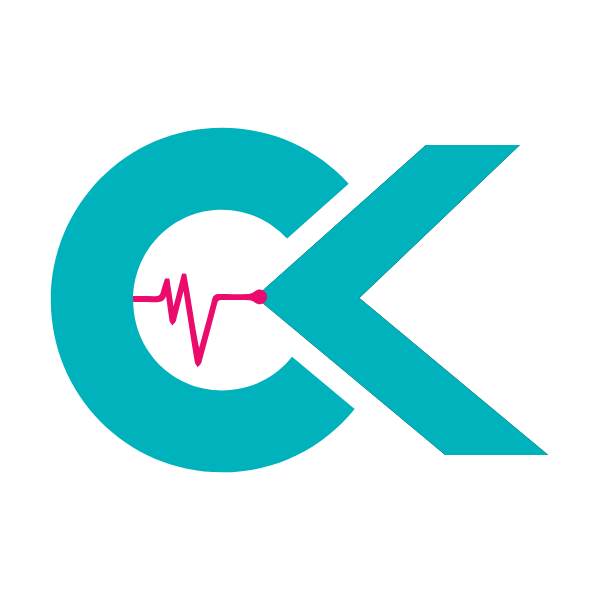Cellulite, often described as an ‘orange peel’ or ‘cottage cheese’ texture, is a common cosmetic concern affecting a significant portion of the adult female population. While not a medical threat, its presence can impact self-esteem and body confidence. Understanding the underlying mechanisms and the diverse array of available treatments is crucial for individuals seeking effective solutions. This comprehensive guide will delineate the various approaches to cellulite reduction, from lifestyle modifications to advanced medical interventions, providing an authoritative perspective on what truly works and what to consider when pursuing treatment.
Table of Contents
Understanding Cellulite: Causes and Types
Cellulite is a complex condition influenced by multiple factors, not simply excess fat. It arises from the interaction between the superficial layer of fat, connective tissue, and the skin. Women are disproportionately affected due to differences in their connective tissue structure. In women, fibrous septae (bands of connective tissue) run perpendicular to the skin surface, anchoring the skin to deeper tissues. When fat cells accumulate and expand, these septae pull down on the skin, creating the characteristic dimpling. Men, conversely, typically have septae that crisscross in a more orderly fashion, which tends to hold fat cells in place more uniformly.
Key contributing factors include:
- Genetics: Heredity plays a significant role in predisposition to cellulite.
- Hormonal Factors: Hormones, particularly oestrogen, are believed to influence cellulite development.
- Diet and Lifestyle: Poor diet, lack of physical activity, and dehydration can exacerbate its appearance.
- Age: As skin loses elasticity with age, cellulite can become more prominent.
- Body Fat Percentage: While not exclusively a condition of overweight individuals, higher body fat can make cellulite more noticeable.
Cellulite is commonly categorised into grades based on its severity:
- Grade 0: No visible cellulite.
- Grade 1: Cellulite visible only when skin is pinched.
- Grade 2: Cellulite visible when standing, but not when lying down.
- Grade 3: Cellulite visible when standing and lying down, with deep depressions.
Lifestyle and Topical Approaches: The Foundation of Care
While no lifestyle change can entirely eliminate cellulite, these approaches form a vital foundation for managing its appearance and supporting overall skin health.
Diet and Nutrition
Adopting a balanced diet rich in fruits, vegetables, and lean proteins, coupled with adequate hydration, can support skin elasticity and reduce inflammation. Limiting processed foods, excessive sugar, and unhealthy fats can help manage overall body fat, potentially reducing the prominence of cellulite.
Exercise and Physical Activity
Regular exercise, particularly a combination of cardiovascular activity and strength training, can improve muscle tone, enhance circulation, and reduce body fat. While exercise won’t break down the fibrous septae, it can significantly improve the skin’s smooth appearance by firming underlying muscles and reducing fat volume.
Topical Creams and Lotions
Many topical products claim to reduce cellulite. Ingredients such as retinol, caffeine, and various botanicals are often included. Caffeine, for example, can temporarily dehydrate fat cells, leading to a slight plumping of the skin. Retinol can improve skin thickness and elasticity over time. However, it is crucial to manage expectations; topical treatments typically offer only modest and temporary improvements to the skin’s surface texture and do not address the structural issues causing cellulite.
Non-Invasive Medical Treatments
Advancements in medical aesthetics have led to a variety of non-invasive treatments designed to improve the appearance of cellulite. These methods typically require multiple sessions and offer gradual results.
Radiofrequency (RF) Therapy
RF devices use heat to stimulate collagen production and improve skin elasticity. The heat can also help break down fat cells and improve lymphatic drainage. Results are generally subtle and require a series of treatments, with maintenance sessions often recommended.
Laser Therapy
Low-level laser therapy (LLLT) or cold laser therapy aims to stimulate cellular activity, improve circulation, and promote lymphatic drainage. Like RF, these treatments are non-ablative and focus on improving skin quality and reducing fat cell volume. The effects are often temporary.
Acoustic Wave Therapy (AWT)
AWT, also known as extracorporeal shockwave therapy (ESWT), uses sound waves to break down fibrous septae, stimulate collagen production, and improve blood flow. This method is increasingly popular for its ability to target the structural components of cellulite. Multiple sessions are needed, with results gradually appearing over several weeks.
Vacuum-Assisted Massage and Cupping
These techniques involve mechanical massage combined with suction to improve circulation, lymphatic drainage, and temporarily stretch the fibrous bands. Devices like Endermologie use rollers and suction to manipulate the skin and underlying tissue. While they can improve skin texture and reduce fluid retention, results are often short-lived and require ongoing treatments.
Minimally Invasive Procedures: Targeting the Root Cause
For more persistent and noticeable cellulite, minimally invasive procedures offer more substantial and longer-lasting results by directly addressing the fibrous septae.
Subcision (e.g., Cellfina)
Subcision is a technique that involves using a small blade or needle-like device to surgically release the taut fibrous bands that pull down the skin, creating dimples. Plastic Surgery in Turkey clinics often offer advanced subcision techniques. Devices like Cellfina automate this process, allowing for precise and controlled release of these septae. The procedure is performed under local anaesthesia, with minimal downtime. Clinical studies have demonstrated the efficacy of subcision in providing sustained improvement in cellulite appearance, with results lasting for several years. A notable review published in the Journal of Clinical and Aesthetic Dermatology highlighted that treatments directly targeting the fibrous septae, such as subcision, offer the most significant and durable improvements by physically releasing the structures responsible for the dimpling effect. The study concluded that while numerous treatments exist, those that mechanically or enzymatically disrupt these septae show superior long-term outcomes compared to energy-based devices or topical applications.
Laser Cellulite Treatment (e.g., Cellulaze)
This procedure involves inserting a tiny laser fibre under the skin through a small incision. The laser energy is used to melt fat, release fibrous bands, and stimulate collagen production. It’s an effective method for targeting all three components of cellulite: fat, connective tissue, and skin laxity. Recovery typically involves some bruising and swelling.
Radiofrequency Microneedling with Subcision
Combining microneedling with radiofrequency energy and sometimes concurrent subcision, this approach uses tiny needles to deliver RF energy deep into the skin, stimulating collagen and elastin production while simultaneously disrupting fibrous bands. It improves skin texture, tightness, and reduces dimpling.
Surgical Options and Body Contouring
While traditional surgical liposuction does not directly treat cellulite, it can improve overall body contour and reduce fat pockets, which may indirectly enhance the appearance of cellulite in some cases. It’s essential to understand that liposuction primarily removes fat, whereas cellulite is a structural issue of the skin and connective tissue. For comprehensive body reshaping, including addressing concerns related to skin laxity, procedures such as a Thigh Lift Surgery in Turkey might be considered, which can tighten skin and significantly improve the appearance of the thigh area, though this is distinct from direct cellulite treatment. Patients interested in such body contouring options can explore various Liposuction in Turkey techniques available.
Comparing Cellulite Treatments: Efficacy, Cost, and Recovery
The choice of cellulite treatment depends on the severity of the condition, individual preferences, and budget. It is important to have realistic expectations regarding outcomes and understand the commitment required for each method.
| Factor | Non-Invasive Therapies | Minimally-Invasive Procedures | Surgical Body Contouring |
|---|---|---|---|
| Invasiveness | Minimal to None | Low | Moderate to High |
| Efficacy for Cellulite | Modest, temporary | Significant, long-lasting | Indirect, targets fat/skin |
| Downtime | None to minimal | A few days to 1 week | Several weeks |
| Cost per Session | Lower | Moderate (overall) | Higher (overall) |
| Duration of Results | Weeks to months | 1-5+ years | Long-term for contouring |
Cellulite Treatment in Turkey vs. United Kingdom
For international patients, particularly those from the United Kingdom, Turkey has emerged as a leading destination for cosmetic and medical procedures due to its competitive pricing, high standards of care, and experienced specialists. When considering how to remove cellulite, the cost-effectiveness of treatments in Turkey is a significant draw.
Below is a comparison of estimated prices for common cellulite-related procedures and treatments between Turkey and the United Kingdom. These figures are approximations and can vary based on clinic, surgeon’s experience, and the specific details of the treatment plan.
| Service | Turkey Price (GBP) | United Kingdom Price (GBP) |
|---|---|---|
| Cellulite Reduction (e.g., Subcision) | £1,500 – £3,000 | £3,500 – £6,000 |
| Laser Cellulite Treatment (per area) | £1,200 – £2,500 | £3,000 – £5,500 |
| Radiofrequency Microneedling (course) | £800 – £1,800 | £2,000 – £4,000 |
| Liposuction (small area) | £1,800 – £3,500 | £3,500 – £6,500 |
| Thigh Lift Surgery | £3,000 – £5,500 | £6,000 – £10,000 |
These price differences highlight a key reason many UK patients choose to travel to Turkey for their treatments. The lower operational costs and favourable exchange rates allow for significant savings without compromising on quality or safety.
CK Health Turkey: Your Partner in Cellulite Reduction
At CK Health Turkey, we understand the desire for smoother, firmer skin and the impact that cellulite can have on your confidence. We pride ourselves on offering advanced and effective cellulite reduction treatments tailored to the individual needs of our international patients. Our state-of-the-art facilities, highly skilled medical professionals, and patient-centric approach ensure you receive world-class care from consultation through to recovery.
We provide a comprehensive range of options, from advanced non-invasive therapies to precision minimally invasive procedures like subcision and laser cellulite treatment. Our team will guide you through the various choices, helping you understand the benefits and expected outcomes of each. We believe in transparency and empowering our patients with knowledge, ensuring they make informed decisions about their aesthetic journey. Learn more about How Do We Work and what makes CK Health Turkey a preferred choice for medical tourism.
Embark on your journey to smoother skin with CK Health Turkey. Contact us today for a personalised consultation or visit our website to explore our full range of services and discover how we can help you achieve your aesthetic goals.
Addressing cellulite requires a nuanced understanding of its origins and a strategic approach to treatment. While superficial remedies may offer temporary relief, structural interventions provide the most enduring improvements. Choosing the right treatment pathway, whether through lifestyle adjustments, non-invasive technologies, or minimally invasive procedures, necessitates careful consideration and expert guidance. For those seeking advanced and cost-effective solutions, destinations like Turkey present a compelling option, combining quality care with significant financial advantages. Prioritise consultation with qualified practitioners to determine the most appropriate and effective method for your specific concerns.
FAQs
What is cellulite and what causes it?
Cellulite is a common skin condition characterised by dimpled, lumpy skin, typically on the thighs, buttocks, and abdomen. It’s caused by fat deposits pushing through fibrous connective tissue bands under the skin, creating an uneven surface.
Can diet and exercise alone remove cellulite?
While a healthy diet and regular exercise can significantly improve overall body composition, muscle tone, and skin elasticity, they generally cannot fully eliminate existing cellulite, as it is a structural issue involving connective tissue.
Are topical creams effective for cellulite removal?
Topical creams can offer temporary and modest improvements in skin texture and hydration, but they do not address the underlying fibrous bands that cause cellulite’s dimpled appearance. Results are typically superficial and short-lived.
What is the most effective treatment for severe cellulite?
Minimally invasive procedures such as subcision (e.g., Cellfina) and laser cellulite treatment (e.g., Cellulaze) are currently considered among the most effective for persistent and severe cellulite, as they directly target and release the fibrous septae.
How long do cellulite treatment results last?
The duration of results varies by treatment type. Non-invasive methods often require ongoing maintenance. Minimally invasive procedures like subcision can offer results lasting several years.
Is cellulite removal painful?
Most non-invasive treatments are well-tolerated with minimal discomfort. Minimally invasive procedures are performed with local anaesthesia to minimise pain, and post-procedure discomfort is usually managed with over-the-counter pain relievers.
Why is Turkey a popular destination for cellulite treatment?
Turkey offers high-quality medical treatments at significantly lower costs compared to countries like the UK, along with experienced medical professionals and modern facilities, making it an attractive option for international patients.
Does liposuction remove cellulite?
No, liposuction is primarily a fat-removal procedure and does not directly treat cellulite. While it can improve body contour, it may sometimes even exacerbate the appearance of cellulite if not performed carefully, as it doesn’t address the fibrous bands.



